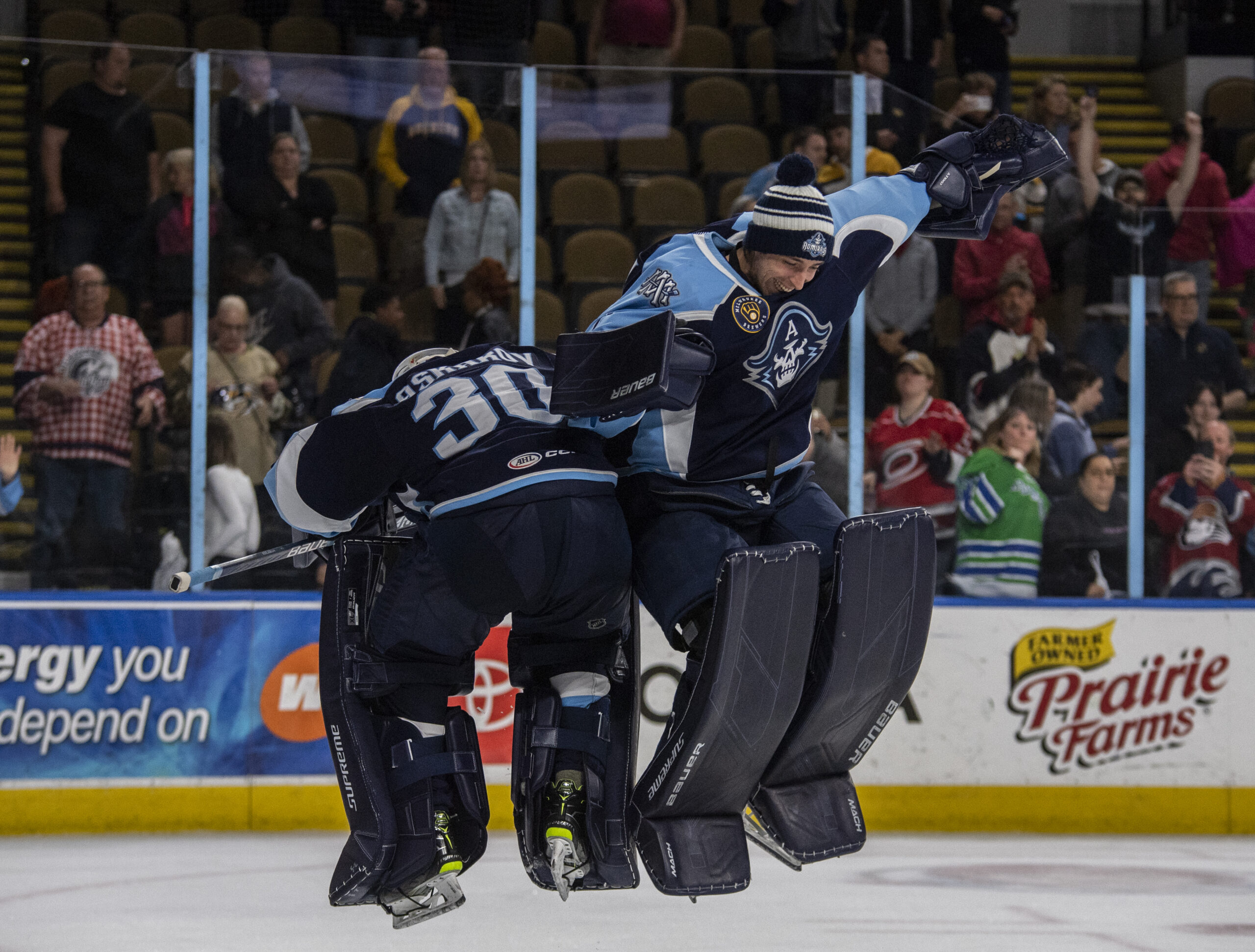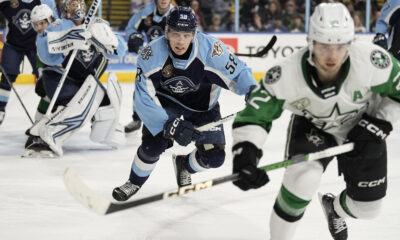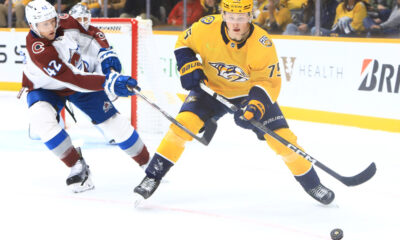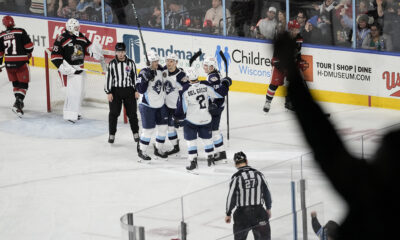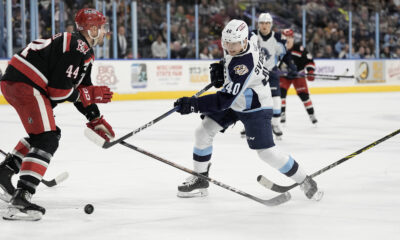For the first time since 2006, the Milwaukee Admirals are headed to the Western Conference Final (WCF). Much like they did against Manitoba, the Admirals went the distance with the Texas Stars, dispatching them in five games in the previous round.
Milwaukee will now travel west to meet the brand-new Coachella Valley Firebirds—the affiliate of the Seattle Kraken; the Admirals and Firebirds did not meet in the regular season.
Coachella Valley finished their maiden regular season second in the Pacific Division with a 48-17-7 record and 103 points compared to Milwaukee’s 41-24-7 record and 89 points. On their way to the WCF, they knocked off third-place Colorado and division-winner Calgary in a barnburner of a series. These two squads—who have scored the most (Firebirds – 47) and third-most (Admirals – 34) goals in the AHL playoffs will now meet to decide who plays for the Calder Cup.
Forwards
Through two series, the Milwaukee Admirals have scored a respectable 3.40 goals per game, and their forward group has led much of that charge. Luke Evangelista, with his four goals and 13 points, sits third in playoff scoring league-wide; Kiefer Sherwood and Joakim Kemell sit a tad behind him with eight and six points, respectively.
Aside from Evangelista, Milwaukee’s top forwards haven’t been dominating the scoresheet, but this club has succeeded in scoring by committee. Every forward that has appeared in a playoff game, except for four, has notched a goal, and six forwards have scored five or more points in ten games. Kemell, in particular, has been a huge value add, providing dynamism to Milwaukee’s already potent power play and a tenacious forecheck at even strength.
The Admirals scored 12 even-strength goals against Texas, increasing their two-round total to 22. Against Manitoba, Milwaukee was particularly effective off the rush and in converting turnovers, and that continued against Texas; seven of their 12 even-strength markers came during those scenarios. But the Admirals did add to their offensive portfolio with five goals coming from an in-zone cycle; that diversity could prove helpful against a high-scoring Coachella Valley team.
The biggest concern with this forward group right now is two-fold: Phil Tomasino and Anthony Angello. Tomasino has posted just three assists in ten playoff games, and while I thought he was much more noticeable against Texas, he needs to bring more to the table—especially if the Admirals get into a shootout with the Firebirds. Second, the Anthony Angello experiment may be over. Coachella Valley is a fast team, and while Angello’s muscle is valuable, he has barely appeared on the postseason scoresheet (one assist), and he leads Milwaukee with 28 penalty minutes (only one other player has more than ten). Due to the AHL’s veteran rule, captain Cole Schneider sat out the last three games of the Texas series. Depending on John Leonard’s availability, I wouldn’t be surprised to see Schneider back in for Angello.
At the other end of the ice, looking at Coachella Valley’s forward group can be daunting. Both in the regular season and the playoffs, this group has been led in scoring by Max McCormick and Kole Lind. Those two combined for 129 points during the year and now lead the AHL in postseason points (15 and 17, respectively). On top of that, Cameron Hughes was nearly a point-per-game player in the regular season and now has 13 points in 13 playoff games too. Plus, with the elimination of the Kraken from the Stanley Cup Playoffs, the Firebirds have welcomed the return of AHL Rookie of the Year Tye Kartye (57 points in 72 games) and veteran Jesper Frödén (47 points in 44 games).
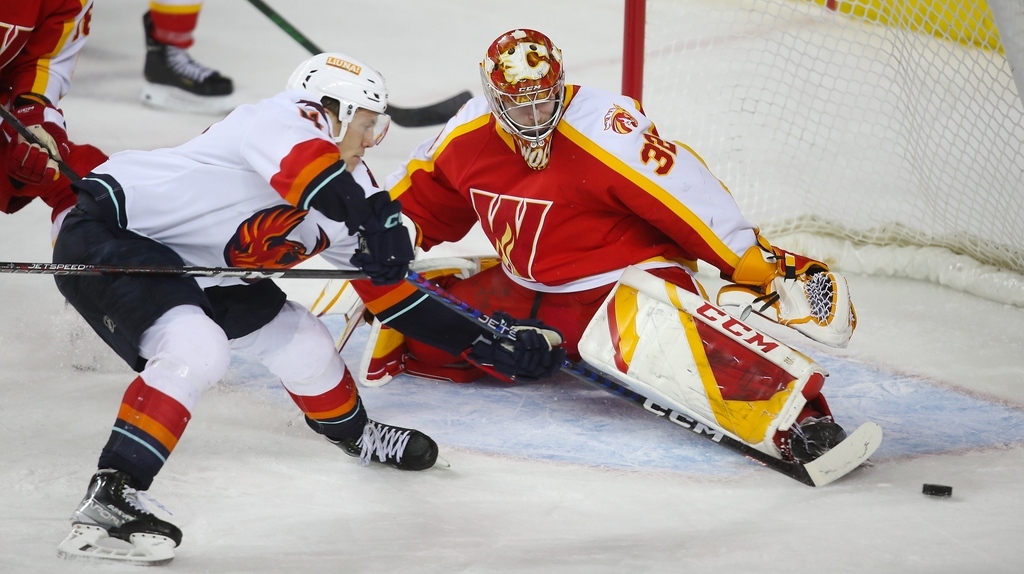
And, if that’s all not enough, Andrew Poturalski—arguably the best player in the AHL the last few years, winning two Calder Cups and back-to-back scoring titles—returned during the Calgary series from an injury that, in late January, was supposed to knock him out for four to six months. Poturalski then scored the series winner in overtime of game five.
Coachella Valley is dangerous; they score goals, and they can beat you in every way possible. Against Calgary, they scored nearly three even-strength goals per game (14 total), and there’s no discernable pattern to their offense. Four goals off the rush, four goals off of turnovers, six goals off an offensive-zone cycle… they can do it all, and they will be quite the test for this Milwaukee group.
Defenders
On the blue line, Milwaukee was able to return to its normal rotation of defenders with Kevin Gravel returning from injury during the Texas series. Karl Taylor hasn’t messed much with this group, and that’s unsurprising. This group allowed just 29.2 shots per game in five games against Texas—a slight improvement from the Manitoba series (and that includes a double overtime game). Of the ten even-strength goals Milwaukee allowed, seven came off a Texas rush and three came from an offensive-zone cycle; all in all, the Admirals minimized neutral-zone turnovers and largely admonished any chances the Stars sought from them.
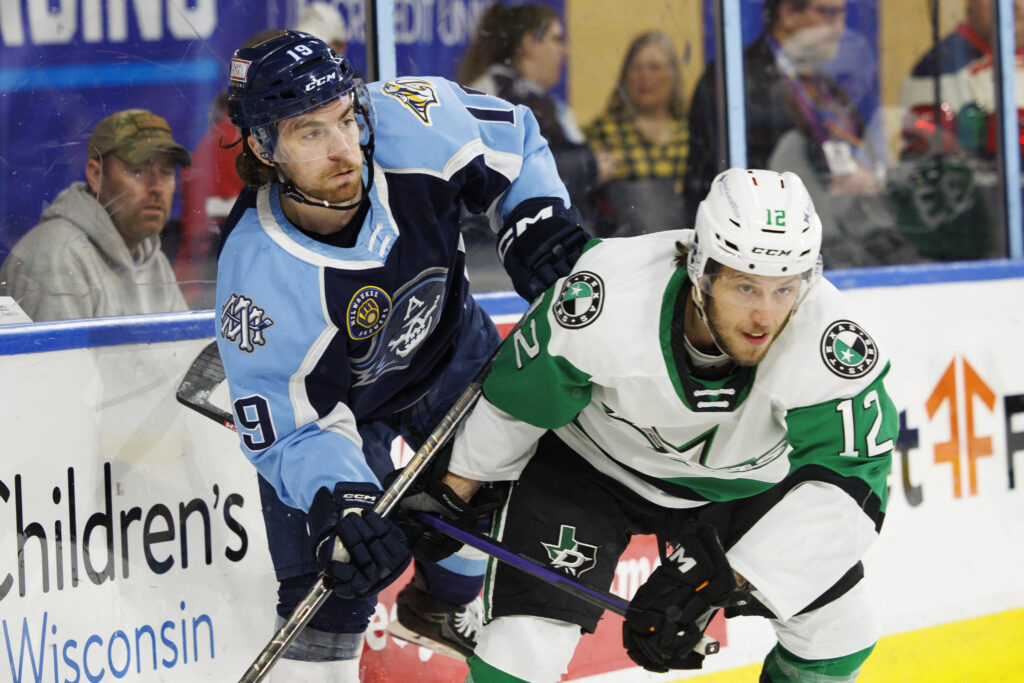
At the other end of the ice, Milwaukee’s defenders were critical in the Admirals’ scoring. Jordan Gross has notched two goals and 11 points in 10 games, and Marc Del Gaizo has added eight points too.
The Firebirds’ blue line is just as offensively talented led by Ryker Evans. The 2021 second-round pick notched 44 points in his first AHL regular season, and he’s been extremely impressive in the playoffs, leading all blueliners with 13 points. Behind him, Coachella Valley deploys some solid two-way options in Gustav Olofsson and Brogan Rafferty, and that group is rounded out by Jimmy Schuldt, Eddie Wittchow, and former Admiral Matt Tennyson.
Against Calgary, the Firebirds gave up ten even-strength goals. The big, flashing neo sign here is that eight of those ten goals came off the rush. So, if Milwaukee can replicate the success from their first two rounds, particularly against Manitoba, they might have a way to exploit this blue line at even strength.
Goalies
Yaroslav Askarov has been extremely solid for the Admirals through two series. In 10 games, he’s posted a 0.909 save percentage and faced 286 shots—third most in the playoffs. Based on goalies who have appeared in five or more playoff games, he’s saved 0.05 goals above average.
There has been some chatter about Askarov’s glove hand and whether he’s having issues with the catching glove itself or with just squaring up to the play after cross-crease movement. I tend to think it’s the latter, but as he allowed six of the ten even-strength goals he let in against Texas over his glove side, I would bet that’s a weakness Coachella Valley looks to target.
Much like Askarov, Joey Daccord has been the Firebirds’ go-to in the crease. Over 13 games, he’s faced 34.4 shots per game compared to Askarov’s 28.6 (over ten games) and is rocking a 0.935 save percentage. Most impressively, he’s stopped 11.72 goals above average.
Special Teams
I’ve made a lot of noise about Milwaukee’s special teams this postseason, and it’s fueled a lot of their success. The Admirals’ power play sputtered a bit against Texas, going just four of 16. That’s still quite good, and Milwaukee still holds a 28.1% rate throughout the postseason. Regardless, Karl Taylor did some tinkering to their strategy on the man-advantage towards the end of the Stars’ series. With Cole Schneider’s net-front presence absent from the lineup, the Admirals experimented with a four corners approach, manning one player at the point, two along the walls, one in the corner, and one in front of the net; that was a departure from their usual 1-3-1 umbrella-style unit. I think lineup changes will dictate which option they roll out and so will the Firebirds’ penalty kill. Those units usually play a contracting box style but haven’t found a ton of success, recording a subpar 80.6% kill rate. Additionally, Coachella Valley uses a 0-1-3 neutral-zone setup on the penalty kill that can be beaten with enough speed.
The Admirals’ penalty kill, however, remains one of the best in the league with an 84.4% success rate through two series. Those units will be critical to slowing down Coachella Valley’s offensive firepower, which has scored 11 times on 51 power-play opportunities (21.6% success rate).
X-Factors
I’ve said it before, and I’ll say it again: special teams. If Milwaukee wins this series, the most probable reason why will be outplaying the Firebirds on the power play and staying out of the box. The Admirals have done an okay job mitigating penalties, but at 10.8 PIMs per game, they need to do better—especially compared to the Firebirds’ 7.38 PIMs per game.
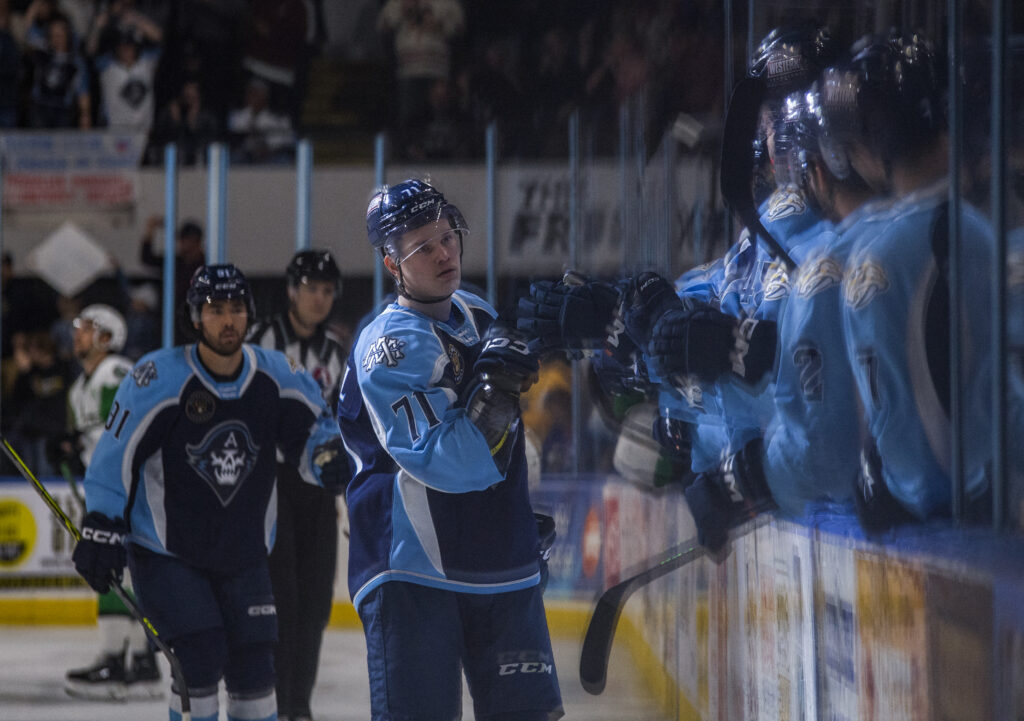
For Coachella Valley, the key to success here is their rush defense. They have the big guns up front to score, and they have the goaltending, but they’ve struggled to slow down opponents in transition. As mentioned above, they allowed eight of Calgary’s ten even-strength goals within a few seconds of them entering the offensive zone.
The Admirals will have their hands full in what is certainly their toughest test of the season. If Askarov can maintain his solid play, and if Milwaukee can get just a little more depth scoring, then their special teams’ success could push them over the hump and onto the Calder Cup Finals.
Series Schedule
In the AHL, the conference finals and Calder Cup final move to best-of-seven series:
- Thursday, May 25: Milwaukee @ Coachella Valley — 9:00 p.m. CDT
- Saturday, May 27: Milwaukee @ Coachella Valley — 9:00 p.m. CDT
- Monday, May 29: Milwaukee vs. Coachella Valley — 6:00 p.m. CDT
- Thursday, June 1: Milwaukee vs. Coachella Valley — 7:00 p.m. CDT
- Saturday, June 3: Milwaukee vs. Coachella Valley — 6:00 p.m. CDT
- Monday, June 5: Milwaukee @ Coachella Valley — 9:00 p.m. CDT
- Wednesday, June 7: Milwaukee @ Coachella Valley — 9:00 p.m. CDT
All statistics are courtesy of eliteprospects.com, theahl.com, ahltracker.com, or manually tracked.

